#tulipomania
Explore tagged Tumblr posts
Text
Tulipomania
"The demand for tulips ... increased so much in the year 1636, that regular marts for their sale were established on the Stock Exchange of Amsterdam, in Rotterdam, Harlaem, Leyden, Alkmar, Hoorn, and other towns.
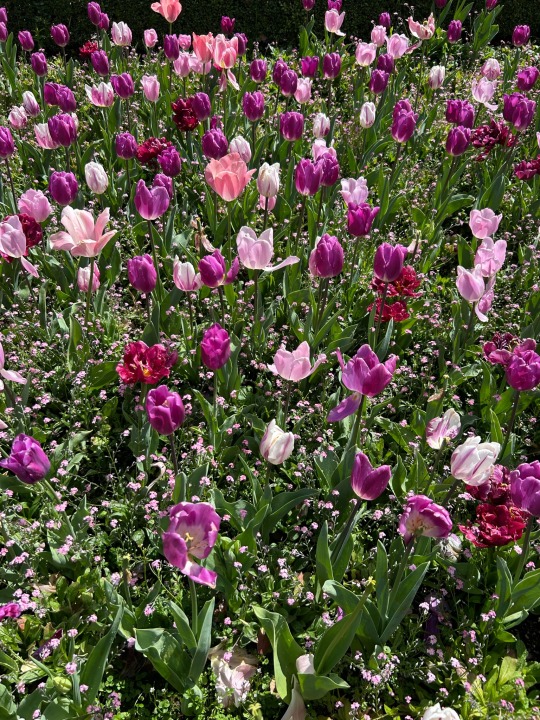
"Symptoms of gambling now became, for the first time, apparent. ...

"At first, as in all these gambling mania, confidence was at its height, and everybody gained. ... Many individuals grew suddenly rich.
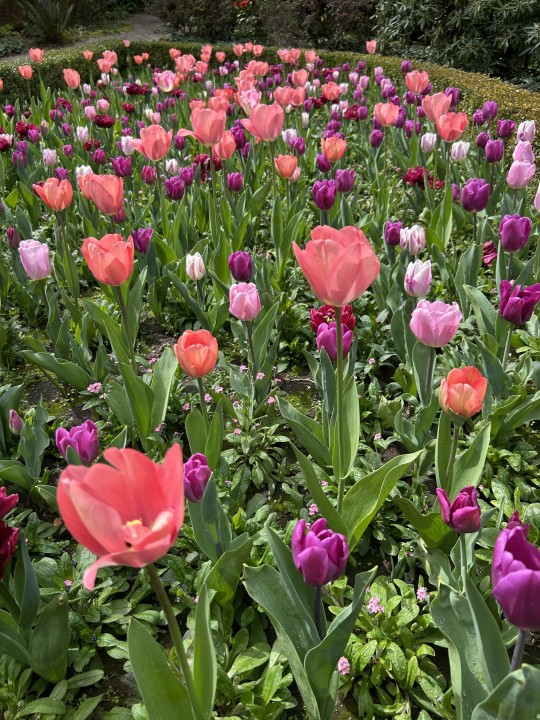
"A golden bait hung temptingly out before the people, and, one after the other, they rushed to the tulip marts, like flies around a honeypot.

"Every one imagined that the wealthy from every part of the world would send to Holland, and pay whatever prices were asked for them,
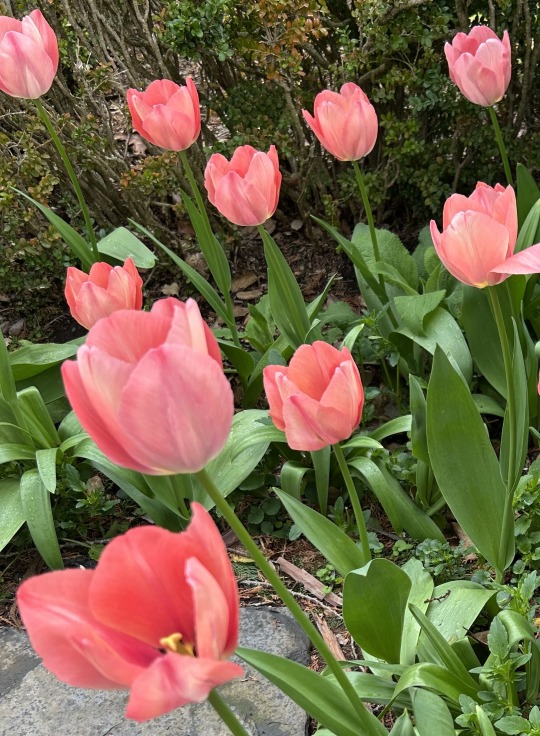
"and that the passion for tulips would last for ever."

Text excerpts from the "Tulipomania" chapter of Extraordinary Popular Delusions and the Madness of Crowds, by Charles Mackay, 1841.
Photos from my trip to Filoli Historic House & Garden.
#my kind of speculative bubble#my passion for tulips will last forever#Dutch Golden Age#Extraordinary Popular Delusions and the Madness of Crowds#Charles Mackay#tulipomania#tulips#flowers#photo#notebook#filoli
14 notes
·
View notes
Text
Mini history rant (source: my recollection of Tulipomania by Mike Dash)
Okay so
During the whole Tulip Mania, there was a need to show people what bulbs would grow into, because bulbs are bland and boring and often look the same, and you don’t want to sell tulips in full bloom because that is a foolish idea. So what people would do would be to make “tulip books” that would show what a blooming flower looks like and the name of the flower. Most didn’t have prices because sellers liked profiling their customers for how much they could charge. That last bit isn’t necessary information but I found it interesting.
Now, tulip books would need to have art from artists around. Most of them were on a case by case basis, so commissions were common. Because artists have always been willing to do whatever so that they can do what they are passionate about, and because people treat artists like shit, they were paid horribly for it!
Do y’all know Rembrandt? Well, the guy who taught Rembrandt, Jacob van Swanenburgh, did a bunch of these tulip book works! About 133, if my memory serves.
Do ya wanna know how much he got paid for each of them?
6 stuivers a piece.
That was worth less than a loaf of bread.
Anyway moral of the story: treat artists better
10 notes
·
View notes
Text
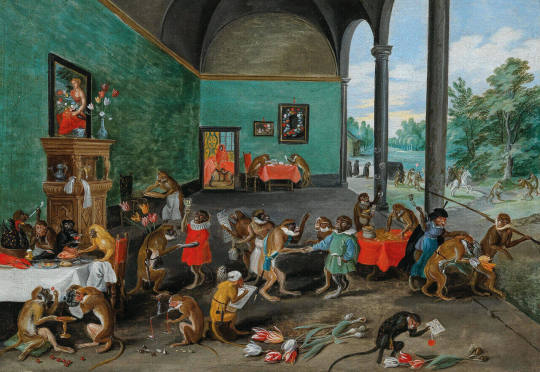
An Allegory of Tulipomania | Jan Brueghel the Younger (1601-1678)
4 notes
·
View notes
Text
Tulipomania releases Absolution album inspired by Jeff VanderMeer
Tulipomania Releases Absolution Album and Collaborates with Jeff VanderMeer Philadelphia-based duo Tulipomania has released their sixth album, Absolution, through Sursumcorda Records. The project aligns with the publication of Absolution, the latest novel by bestselling author Jeff VanderMeer, marking a collaboration that intertwines music and speculative fiction. The album is available on CD,…
0 notes
Text
Tulipomania: Sleep Deprived Music Review
@tulipomania #musicblog @ITHERETWEETER1 #newmusic @musiccitymemo #musicreview #newmusicalert @ShamelessPR_ @MusicBlogRT
Tulipomania have a new album, Dreaming of Sleep, available for everyone to experience. Honestly, the album is an experience all on its own. While I should have finished this review yesterday, the music just sent me somewhere else. I enjoy the songs “Shines On” and “Time Will Tell.” Many of the songs on the album are about time. Some people are obsessed with the concept of time. There are others…
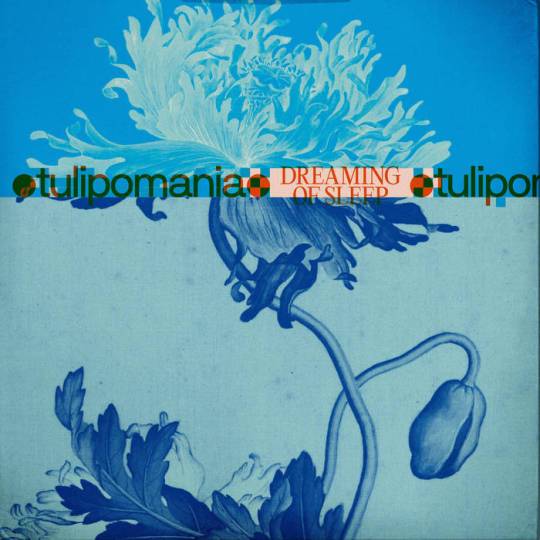
View On WordPress
0 notes
Text
Dalla tulipomania ancora mercati in bolla speculativa
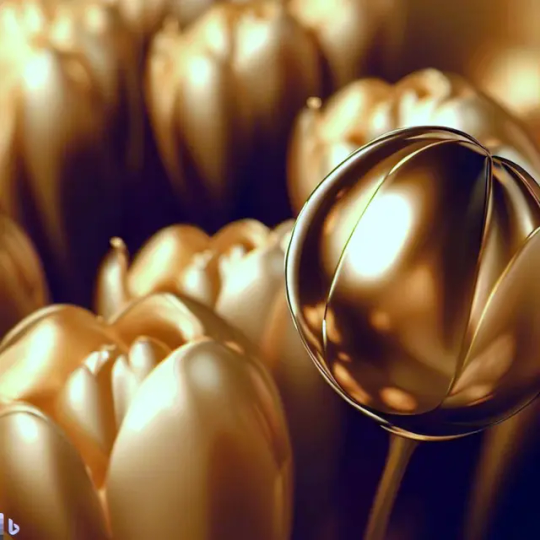
Cosa si intende quando si parla di bolla speculativa. Le cause di una bolla speculativa e i suoi effetti: le tipologie e alcuni esempi storici. All’interno dei mercati finanziari possono verificarsi delle situazioni per le quali determinate attività finanziarie subiscono un repentino incremento del loro prezzo che porta le loro quotazioni a valori insostenibili rispetto alla base sottostante. È la cosiddetta bolla speculativa che, molto spesso, riguarda azioni e obbligazioni, anche se non mancano i casi nella storia di fenomeni di questo tipo aventi ad oggetto altri beni. Si sottolinea che la bolla speculativa rappresenta un fenomeno che, benché più o meno possibile, è da intendersi come eccezionale. A distinguere la bolla da un generale innalzamento dei prezzi è l’elemento che la scaturisce che è da intendersi come del tutto ingiustificato. Solitamente, in caso di bolla speculativa, si assiste ad un aumento smisurato della domanda di un dato bene in un lasso temporale molto breve. Che cos’è una bolla speculativa
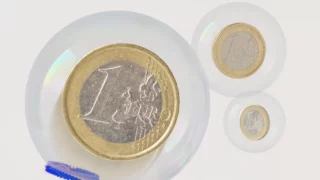
In base ai discorsi in parte già affrontati, è possibile dire che la bolla speculativa viene comunemente intesa come quella situazione nella quale si ha un aumento ingiustificato dei prezzi dei beni sul mercato. Viene da se che il fenomeno possa interessare tutti i mercati, così come qualsiasi bene che su di essi viene scambiato, anche se molti analisti sostengono che vi siano determinati beni maggiormente esposti al rischio di bolla speculativa. Volendo fare qualche esempio, alcuni studiosi dei mercati sostengono che casi di innalzamento ingiustificato dei prezzi possono concretizzarsi da qui ai prossimi anni nei mercati dei Bitcoin, in quello dei titoli tech e nel crescente settore del green. Si tratta di mercati in forte crescita, dove si potrebbe assistere in poche ore ad un brusco aumento della domanda e, dunque, ad un innalzamento incontrollato dei prezzi. Le cause delle bolle speculative Prima di arrivare a capire quali possano essere gli effetti creati da una bolla speculativa, è utile capire come la stessa possa verificarsi. Tra le cause principali alla base di questo inaspettato innalzamento dei prezzi c’è sicuramente quanto già detto in precedenza, ovvero un'improvvisa crescita della domanda di un dato bene che viene considerato, il più delle volte, come innovativo dai consumatori. Al crescere della domanda sale anche il prezzo, al punto tale che le sue quotazioni arrivano a valori insostenibili e, dunque, si crea la bolla speculativa. Il meccanismo che sta dietro questo fenomeno è molto semplice: più si diffonde la convinzione che un dato bene rappresenti una buona occasione di investimento e acquisto, più il suo valore di mercato tenderà ad aumentare, con le persone disposte a spendere anche molti soldi per poterlo ottenere. Quando tale crescita porta i prezzi ad essere insostenibili si entra nella fase della bolla speculativa. Appare evidente che ad innescare questo scenario siano principalmente i comportamenti degli attori dei mercati e dei consumatori che, per moda e mania, cominciano a ritenere indispensabile e vantaggioso l’acquisto di un determinato bene. Lo scoppio della bolla speculativa L’impatto che una bolla speculativa ha sui mercati è sempre molto negativo in quanto i valori insostenibili di un dato bene portano ad una situazione per la quale pochi o nessuno possono più permettersi di acquistarlo. Si assiste, dunque, ad uno stallo per muoversi dal quale è necessario che la bolla scoppi, ovvero cessi di esistere. A portare alla fine della bolla speculativa possono esserci vari fattori, dalla minore fiducia nei confronti del bene da parte dei consumatori ad un prezzo ormai proibitivo che ne impedisce o diminuisce lo scambio sul mercato. Possiamo dire dunque che quando la bolla scoppia quando si assiste ad una riduzione della domanda, innescata dai motivi in precedenza indicati, e alla riduzione nel tempo del prezzo del bene. Le conseguenze di una bolla speculativa e gli effetti Una bolla speculativa ha delle conseguenze disastrose per i mercati e per i suoi attori. Pensiamo, ad esempio, agli investitori che con l’insorgere di un innalzamento ingiustificato dei prezzi si ritrovano ad avere in possesso titoli o beni che non possono più essere scambiati sul mercato perché costano troppo e perdono la loro convenienza. Tale scenario, soprattutto in presenza di portafogli d’investimento poco diversificati, può anche condurre alla rovina finanziaria degli investitori che, da un giorno all’altro, possono ritrovarsi ad avere titoli o bene dalla difficile circolazione sui mercati. Inoltre, dopo la crescita dei prezzi incontrollata c’è lo scoppio della bolla che, di fatto, porta quei titoli o beni a perdere di valore, con il mercato che torna ai livelli iniziali. Volendo fare un esempio si pensi ad un bene con un valore iniziale di 20 euro e che, per effetto di una bolla speculativa, arriva ad avere un valore di 200 euro. La fine di questo innalzamento del prezzo riporta quel bene al valore iniziale, 20 euro per l’appunto, con tutto ciò che ne consegue in termini di perdite economiche per gli investitori. Le principali tipologie di bolla speculativa Come in parte già detto in precedenza, il concetto di bolla speculativa è quasi sempre riferito ai mercati finanziari e, dunque, ad obbligazioni e azioni. Esistono, tuttavia, anche altre tipologie di bolle speculative come, ad esempio, quella immobiliare. Meno frequente rispetto a quella finanziaria, la bolla speculativa immobiliare ha comunque storicamente dimostrato di essere non così improbabile, con gli immobili che subiscono un aumento netto dei prezzi di mercato. Il risultato di questa bolla è che gli immobili, come ad esempio le case, costano troppo rispetto alle possibilità economiche degli acquirenti, banalmente rispetto ai loro stipendi, e dunque la vendita del bene diventa sempre più difficile o, addirittura, impossibile. Bolla speculativa: la tulipomania Oltre a quella finanziaria e immobiliare, ci sono stati dei casi in cui l’innalzamento ingiustificato dei prezzi ha interessato settori molto particolari. L’esempio canonico, in questo caso, è la cosiddetta tulipomania, ovvero una crescita insostenibile del prezzo dei tulipani verificatasi nella prima metà del Seicento nei Paesi Bassi. Ad innescare questo scenario fu la caccia - alimentata dai mercati - ad accaparrarsi i tulipani futures, venduti come rari fiori ai quali le nobili famiglie del tempo non potevano rinunciare. Le famiglie ricche, dunque, facevano a gara per ottenere il fiore e, con l’aumento della domanda, il prezzo è salito alle stelle fino a diventare insostenibile. Read the full article
#Bollaspeculativa#carburanti#finanziaria#immobiliare#investimenti#investitori#mercati#petrolio#tulipomania
0 notes
Note
Hello!
A beautiful post of yours includes lines from the poem 'on the fate of tulip sultan' by katrina vandenberg - I was wondering whether you would mind sharing the full poem if you have access to it!! I can't find the full poem online anywhere 😭
Thank u so much
Yes certainly! It’s from her book titled Atlas.


[alt text]
ON THE FATE OF THE TULIP SULTAN
Tom Fahey is dead in Boston tonight, the last
of the guys with hemophilia. Tim, I took down but kept the list we made one night of our friends
who died. Little icons crayoned by their names,
sienna shoes, a midnight truck, a lemon puppy, for Matt a cherry guitar. Names
that kept coming until we ran out of room.
Tonight Tom's dead. Three hundred years away, the sultan the Ottomans exiled but let live
embroiders a memory of his tulips
on a tapestry in bright silks. The white stone of the first full moon in April, the jugglers
who strolled the garden with crayon-colored balls.
Real gold for the flames of candles on the backs of the tortoises that plodded through the bowers.
A week-long celebration each spring
for the thousand kinds of tulips that he bred. He doesn't know that as he stitches them
his tulips are beginning to be forgotten.
And three hundred years away only a catalog of them survives. Does it matter
that already no one else alive remembers
the day you, Greg, and I walked arm in arm through Central Square; or the New Year's Eve
on the harbor watching fireworks, when the kids
crouching in the trees flung champagne bottles that hit the street like green exploding stars?
Milton was wrong. It's not just sin we need to see
in order to know it later on, but joy. One day, when the sultan was old and carving a ring
from jade, he said, This green is sun through leaves
on an afternoon in my garden before it bloomed. My moves with faith are slow; I'm a tortoise
with a candle on its back. Tim, the list
of what I've loved numbers in the thousands. Surely I'll recognize a thing worth loving
when I see it for the rest of my life.
#Katrina Vandenberg#on the fate of the tulip sultan#thank you for this request; I love this poem so much and it was good to revisit it#btw in the notes section at the back of the book Vandenberg mentions Mike Dash's book Tulipomania as a source of info for this poem#referencing specifically the mosaic virus and Ahmed III.
0 notes
Text
i want to make a game thats like. Cookie clicker but PVP with like stock market/economy shit going on that emphasizes how unimportant the game is and it's Just A Game so Be Normal, but in game aggressive and absolutely Disgusting economic practices are encouraged bc it Doesn't Matter
#I like big number and I like when everything is bad and terrible for everyone in ways that Don't Matter#There's tulips and plushies and shit#I want to play a tulipomania sim. I want to roleplay a Dutch trader in the height of tulipomania who loses all his money#And dies of idk plague or horse accident or something
0 notes
Text
so apparently this album is getting rereleased in november to be remixed to go specifically with the new southern reach book, and i'm glad i saw mr vandermeer post about it because this is an incredible album
27 notes
·
View notes
Text

Hans Bollongier, Floral Still Life, 1639, oil/panel (Rijksmuseum, Amsterdam)
Painted two years after the disastrous "Tulipomania" stock market crash, this effusive display of tulips represents a painted reminder of the follies of human machinations. The beautiful flowers are almost like jesters pointing out the ridiculousness of human schemes for unrealized riches.
5 notes
·
View notes
Text
He left the dodoes to rot, he couldn’t endure to eat their flesh. Usually, he hunted alone. But often, after months of it, the isolation would begin to change him, change his very perceptions—the jagged mountains in full daylight flaring as he watched into freak saffrons, streaming indigos, the sky his glass house, all the island his tulipomania. The voices—he insomniac, southern stars too thick for constellations teeming in faces and creatures of fable less likely than the dodo—spoke the words of sleepers, singly, coupled, in chorus. The rhythms and timbres were Dutch, but made no waking sense. Except that he thought they were warning him… scolding, angry that he couldn’t understand. Once he sat all day staring at a single white dodo’s egg in a grass hummock. The place was too remote for any foraging pig to’ve found. He waited for scratching, a first crack reaching to net the chalk surface: an emergence. Hemp gripped in the teeth of the steel snake, ready to be lit, ready to descend, sun to black-powder sea, and destroy the infant, egg of light into egg of darkness, within its first minute of amazed vision, of wet downstirred cool by these south-east trades… . Each hour he sighted down the barrel. It was then, if ever, he might have seen how the weapon made an axis potent as Earth’s own between himself and this victim, still one, inside the egg, with the ancestral chain, not to be broken out for more than its blink of world’s light. There they were, the silent egg and the crazy Dutchman, and the hookgun that linked them forever, framed, brilliantly motionless as any Vermeer. Only the sun moved: from zenith down at last behind the snaggleteeth of mountains to Indian ocean, to tarry night. The egg, without a quiver, still unhatched. He should have blasted it then where it lay: he understood that the bird would hatch before dawn. But a cycle was finished. He got to his feet, knee and hip joints in agony, head gonging with instructions from his sleeptalkers droning by, overlapping, urgent, and only limped away, piece at right shoulder arms.
When loneliness began to drive him into situations like this, he often returned to a settlement and joined a hunting party. A drunken, university hysteria would take hold of them all, out on night-rampages where they’d be presently firing at anything, treetops, clouds, leather demon bats screaming up beyond hearing. Tradewinds moving up-slope to chill their nights’ sweating, sky lit half crimson by a volcano, rumblings under their feet as deep as the bats’ voices were high, all these men were caught in the spectrum between, trapped among frequencies of their own voices and words.
This furious host were losers, impersonating a race chosen by God. The colony, the venture, was dying—like the ebony trees they were stripping from the island, like the poor species they were removing totally from the earth. By 1681, Didus ineptus would be gone, by 1710 so would every last settler from Mauritius. The enterprise here would have lasted about a human lifetime.
To some, it made sense. They saw the stumbling birds ill-made to the point of Satanic intervention, so ugly as to embody argument against a Godly creation. Was Mauritius some first poison trickle through the sheltering dikes of Earth? Christians must stem it here, or perish in a second Flood, loosed this time not by God but by the Enemy. The act of ramming home the charges into their musketry became for these men a devotional act, one whose symbolism they understood.
But if they were chosen to come to Mauritius, why had they also been chosen to fail, and leave? Is that a choosing, or is it a passing-over? Are they Elect, or are they Preterite, and doomed as dodoes?
Frans could not know that except for a few others on the island of Reunion, these were the only dodoes in the Creation, and that he was helping exterminate a race. But at times the scale and frenzy of the hunting did come through to trouble his heart. “If the species were not such a perversion,” he wrote, “it might be profitably husbanded to feed our generations. I cannot hate them quite so violently as do some here. But what now can mitigate this slaughter? It is too late… . Perhaps a more comely beak, fuller feathering, a capacity for flight, however brief… details of Design. Or, had we but found savages on this island, the bird’s appearance might have then seemed to us no stranger than that of the wild turkey of North America. Alas, their tragedy is to be the dominant form of Life on Mauritius, but incapable of speech.
That was it, right there. No language meant no chance of co-opting them in to what their round and flaxen invaders were calling Salvation. But Frans, in the course of morning lights lonelier than most, could not keep from finally witnessing a miracle: a Gift of Speech… a Conversion of the Dodoes. Ranked in thousands on the shore, with a luminous profile of reef on the water behind them, its roar the only sound on the morning, volcanoes at rest, the wind suspended, an autumn sunrise dispensing light glassy and deep over them all… they have come from their nests and rookeries, from beside the streams bursting out the mouths of lava tunnels, from the minor islands awash like debris off the north coast, from sudden waterfalls and the wasted rain-forests where the axeblades are rusting and the rough flumes rot and topple in the wind, from their wet mornings under the shadows of mountain-stubs they have waddled in awkward pilgrimage to this assembly: to be sanctified, taken in… . For as much as they are the creatures of God, and have the gift of rational discourse, acknowledging that only in His Word is eternal life to His Word is eternal life to be found… And there are tears of happiness in the eyes of the dodoes. They are all brothers now, they and the humans who used to hunt them, brothers in Christ, the little baby they dream now of sitting near, roosting in his stable, feathers at peace, watching over him and his dear face all night long… .
It is the purest form of European adventuring. What’s it all been for, the murdering seas, the gangrene winters and starving springs, our bone pursuit of the unfaithful, midnights of wrestling with the Beast, our sweat become ice and our tears pale flakes of snow, if not for such moments as this: the little converts flowing out of eye’s field, so meek, so trusting—how shall any craw clench in fear, any recreant cry be offered in the presence of our blade, our necessary blade? Sanctified now they will feed us, sanctified their remains and droppings fertilize our crops. Did we tell them “Salvation”? Did we mean a dwelling forever in the City? Everlasting life? An earthly paradise restored, their island as it used to be given them back? Probably. Thinking all the time of the little brothers numbered among our own blessings. Indeed, if they save us from hunger in this world, then beyond, in Christ’s kingdom, our salvations must be, in like measure, inextricable. Otherwise the dodoes would be only what they appear as in the world’s illusory light—only our prey. God could not be that cruel.
-Thomas Pynchon, Gravity’s Rainbow
11 notes
·
View notes
Text
the idea of 1630s tulipomania is so fucking funny in alien alien considering defenders like sleeping on flowers. like hi wanna buy this fancy bed for a kajillion billion guilders. ig it'd make slightly more sense but brother it's the bulbs
8 notes
·
View notes
Text

Four Tulips: Boter man (Butter man), Joncker (Nobleman), Grote geplumaceerde (The Great Plumed One), and Voorwint (With the Wind). (ca. 1635-45). Jacob Marrel.
There's actually a really interesting history behind this one: it's from a Tulpenboeken (a watercolor album of tulip varieties) created during Dutch Tulipomania when everyone was speculating on tulip's a la the 90's Beanie Baby craze.
4 notes
·
View notes
Text
i shouldve been one of those people painting catalogs during tulipomania. that shouldve been me
2 notes
·
View notes
Text
youtube
Find A Song that is an anthem of mutability and catharsis
Tulipomania - Then and Only Then
"Memory is malleable – the song explores mutability. Lyrically, it's an internal struggle – sonically it projects that energy into the external world.Catharsis. Of course, the effectiveness of that strategy is debatable – that's the fun of it for those who can appreciate the irony – "knock yourself out". We do however believe the ultimate failure is apathy – never give up – the stakes are too high," says Cheryl Gelover.
Tom Murray adds, "It’s about wearing yourself out trying to answer the unanswerable. Dealing with endless, groundless self-serving tales. Deciding to keep moving in the absence of a clear destination. Meditative frustration. Finding a groove to loop into – not answering is the answer."
Added to FAS Spotify playlist dream/psych/shoegaze/ambient.
#music#music blog#indie music#alternative music#psych rock#Tulipomania#Then and Only Then#mutability#indie#alternative#find a song
1 note
·
View note
Text
Tulipomania: Flawless Friday Video
@tulipomania @ShamelessPR_ @ITHERETWEETER1 @musicblogrt @MusicCityMemo #music #musicblog #newmusic #musicvideo #newmusicalert

View On WordPress
0 notes